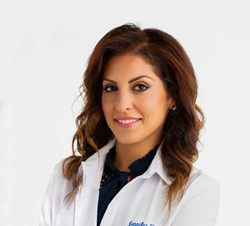
Jennifer Shaba O.D.
Board Certified Optometrist
“Today more than ever it is critical that we communicate the possible causes of dry eye. Aging, hormonal changes, and even usage of devices like phones and computers can all cause dry eye.” stated Dr. Shaba, owner of Dry Eye Healing Institute.
WEST BLOOMFIELD, Mich. (PRWEB)
July 27, 2022
16 million people suffer from dry eye (Source: Prevent Blindness) but they don’t always know the causes, symptoms, or cure. Dr. Jennifer Shaba of Dry Eye Healing Institute is spending July raising awareness of what dry eye is, how it happens and what people can do to treat dry eye. Dr. Shaba is publishing content, speaking to groups, and distributing materials to address misconceptions about dry eye.
“Today more than ever it is critical that we communicate the possible causes of dry eye. Aging, hormonal changes, and even usage of devices like phones and computers can all cause dry eye.” stated Dr. Shaba, owner of Dry Eye Healing Institute.
People may have dry eye if they experience burning or stinging, particles in the eye, a gritty, sandy feeling, itchiness, redness and inflammation, stringy mucus, extreme sensitivity – especially to cigarette smoke, transient blurry vision, or increased sensitivity to light.
There are several reasons that someone may suffer from dry eye. Nearly every person over 50 experiences dry eye symptoms at some point. People are more likely to get dry eyes due to hormonal changes as they get older. Lacrimal gland production of tears naturally decreases with age.
Dry eye disease can also be caused by hormonal changes due to pregnancy, menopause (affecting women over 50 years of age), postmenopausal estrogen treatment, and androgen deficiency.
Lack of sleep, inadequate nutrition, and too much digital screen time can also contribute to dry eye. The reliance on digital devices such as tablets, computers, phones, and televisions has propelled a modern world where countless hours are spent in front of digital screens. This has caused people’s blinking efficiency to suffer. More factors include exposure to smoke, whether it is cigarettes, vaping, marijuana, the wind, and dry climates.
“When it comes to treatment, we conquer the root of dry eye, and don’t chase after temporary solutions. We treat the cause, not just the symptoms,” stated Dr. Shaba, owner of Dry Eye Healing Institute.
Three treatments for dry eye include Meibomian Gland Dysfunction (MGD), iLux, and Intense Pulsed Light (IPL).
Meibomian Gland Dysfunction (MGD)
The goal of MGD treatment is to gently unblock glands, restoring healthy tear film and helping you quickly feel better and see better.
iLux
iLux massages the inflamed tear glands with heat, which treats the source of dry eye problems. iLux promotes tear gland health by targeting blockages in tear ducts. Your eyes are refreshed and your vision is clearer as old build-up dissolves, allowing tears to flow once more.
Intense Pulsed Light (IPL)
Intense Pulsed Light targets the abnormal blood vessels and congested eye glands, the underlying cause of dry eye, with multiple wavelengths at the same time, alleviating the irritated conditions of dry eyes, clogged eyelid glands, and the red inflammation brought about by Rosacea. This technology also hides scars, covers spots, and smooths wrinkles.
About Dry Eye Healing Institute
Dry Eye Healing Institute strives to create a comfortable and accessible environment for patients and aims to develop effective treatment plans to relieve symptoms and provide preventative care.
Dry Eye Healing Institute takes a novel approach to dry eye by mitigating both the signs and symptoms of Dry Eye Disease and Blepharitis.
Dr. Shaba brings knowledge and compassion to every patient interaction. Dr. Shaba gives the most up-to-date information regarding dry eye care and carefully answers any questions and concerns patients may have. Dr Shaba’s goal is to improve your vision, treat your dry eye, and enhance your quality of life.
Share article on social media or email:

